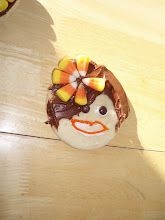While breaking fast is often a family affair done at home, many people enjoy iftar at a restaurant. Many high-end hotels offer pricy, all-you-can-eat buffets that are gut busting. I often wonder if people truly are fasting – how is it physically possible to eat so much food when you have been fasting all day? Maybe because of my eating habits, metabolism, and dislike for waste, I have a hard time going to these gluttonous affairs. Note to fans: if you want to prove me wrong and show me a fancy night out at a 4 star hotel iftar, please contact me.
What I like about breaking fast at a restaurant is the anticipation that fills the room. The tables tend to be already set with the iftar. However, no one takes a bite until it is sunset, which is usually announced by the wait staff. There is something about having food sitting in front of you and not digging right in. Torture for some, appreciation for others.
This Ramadan I’ve been to 4 iftars at restaurants. Here are my experiences:
Noodle House: offers a 95sr set-menu iftar. 4 courses – appetizer, soup, main course, desert, and choice of soda or fresh fruit juice. This does not include the fresh dates and kawa that are served right at sunset. The best part of this set is the fresh dates and the fresh juice. While not all of the choices are vegetarian, everything is fresh and cooked to order and they gladly accommodate various dietary restricions.
Red Chilli: offers a 10sr iftar. Note: this is only iftar and does not include a full dinner or buffet afterwards. The iftar is modest, but just enough for breaking fast. We had chaana chaat, fruit chaat, samosa (with cashews inside – nice touch!), pakora, and mint chutney. Dates and an artificial type juice (Tang?) were also served. Best part of this set: it’s 100% vegetarian, the fruit chaat was delicious, and the spice level of all of the food was perfectly spicy. The worst: Tang? - Please. [please note that they are currently closed for renovations and will re-open after Ramadan]
Marhaba: not sure of the price, but their iftar includes a buffet. The iftar set out on the table had dates, rose water drink, pakora, samosa, 2 types of chaana chaat (one with yogurt, one sweet + sour one with a lot of onions), and mint chutney. Perfect amount for 3 people. The buffet included veg and non-veg Pakistani dishes, Pakistani and Arabic salads, and both Pakistani and Arabic desserts. Best part of this set: the spice level of all of the food was perfectly spicy, the um ali was delicious, as was all of the desserts that I sampled. While Marhaba is not my favorite Paki restaurant in Riyadh, I definitely recommend their iftar.
La Sani: not sure of the price, but their iftar includes a buffet. The iftar set out on the table had dates, rose water drink, pakora, samosa, chaana chaat, and mint chutney. Pampadums with dipping sauces were also present. This was way too much for only 2 people and pampadums are the kiss of death – so delicious and tasty, but I swear they expand in your stomach. The buffet included veg and non-veg Pakistani dishes, both Pakistani and Arabic salads, and all Pakistani deserts. Best part of this set: the buffet was not overwhelming – a good amount of choices, but not too many; desserts were fantastic. Worst part: spice level was not as good as other spots and I felt like there was too much waste at iftar. While I like this restaurant for regular dining, I wouldn’t recommend it as a top iftar location.
What's your favorite restaurant for iftar? Hungry people want to know.












